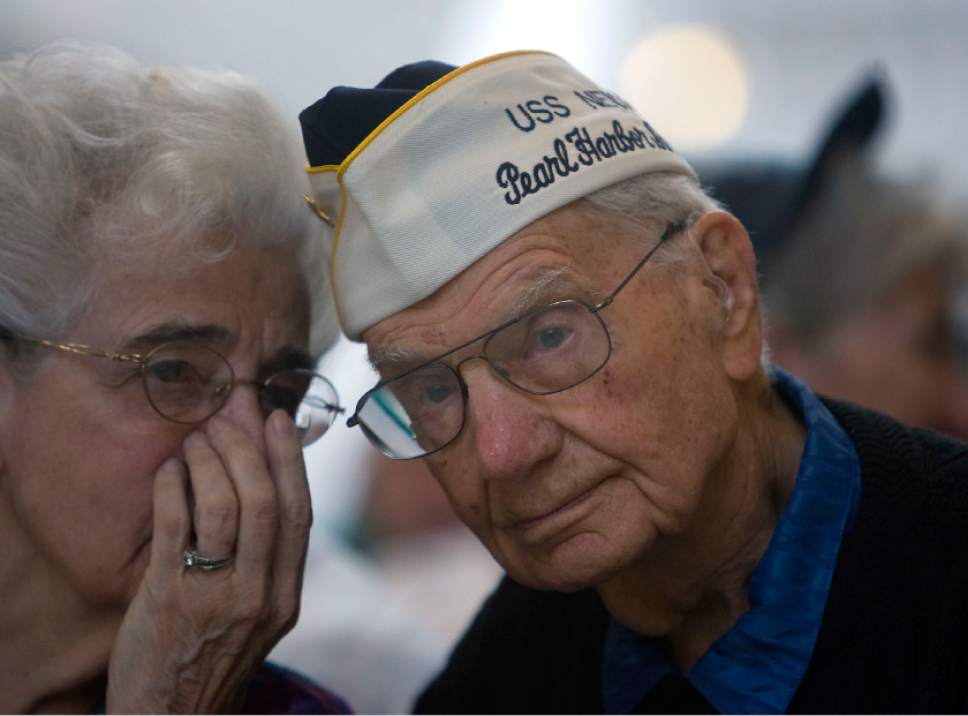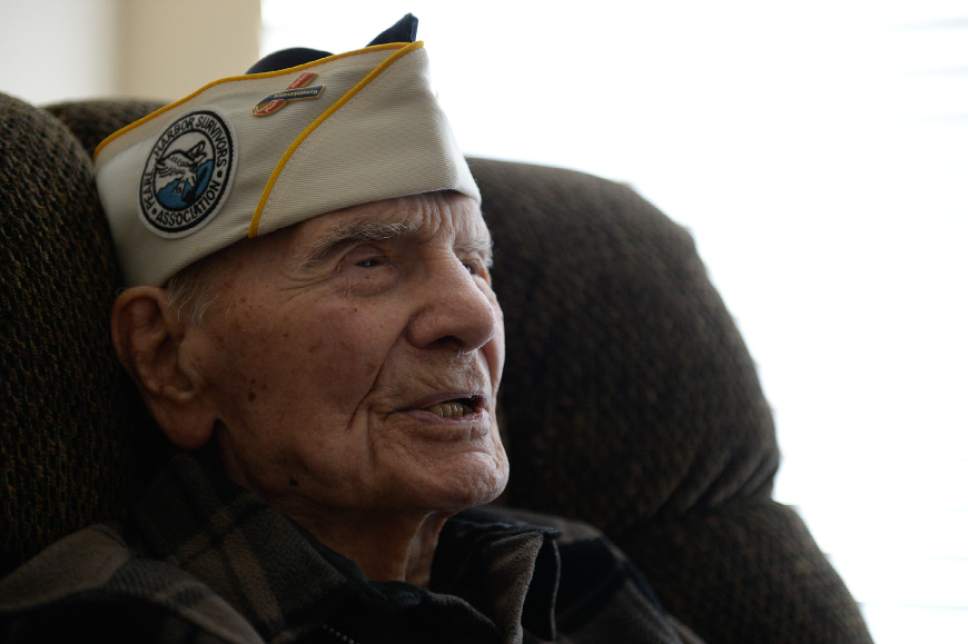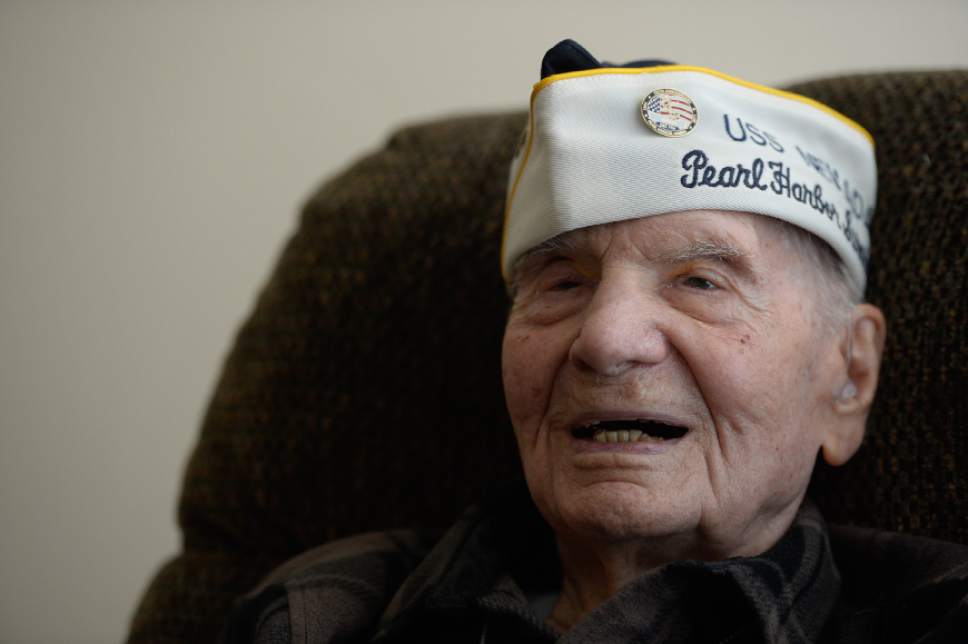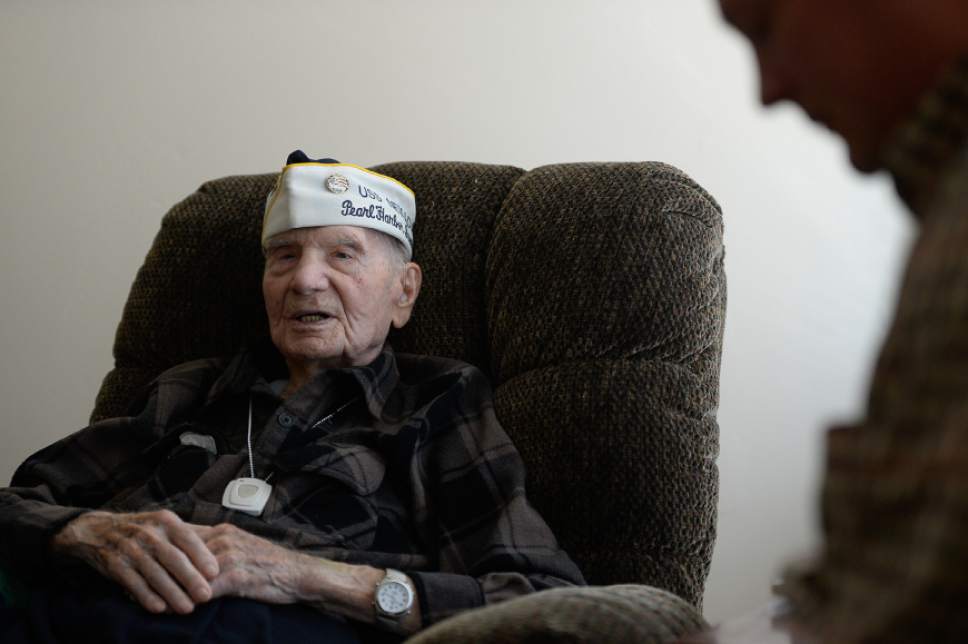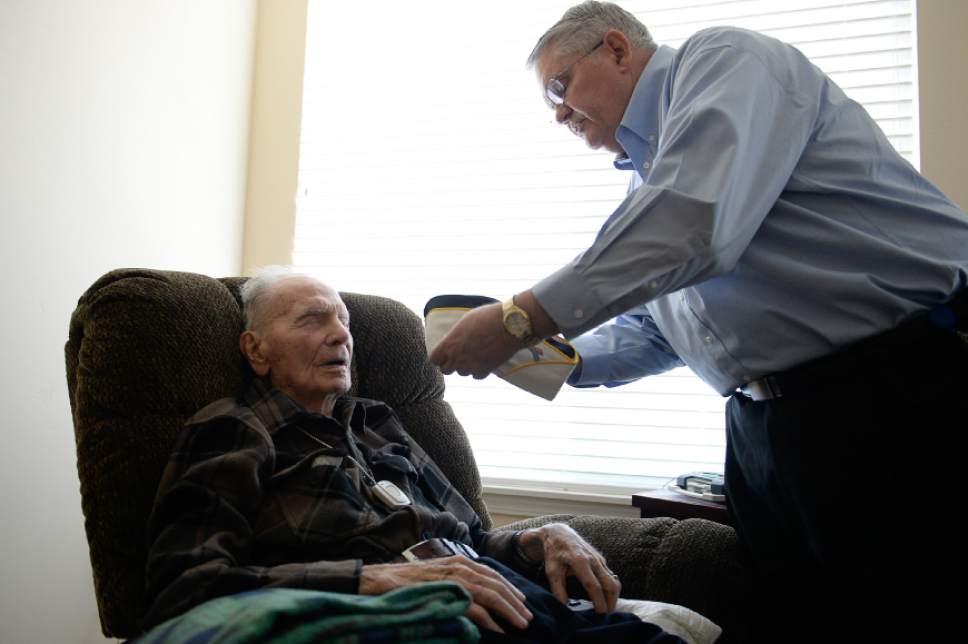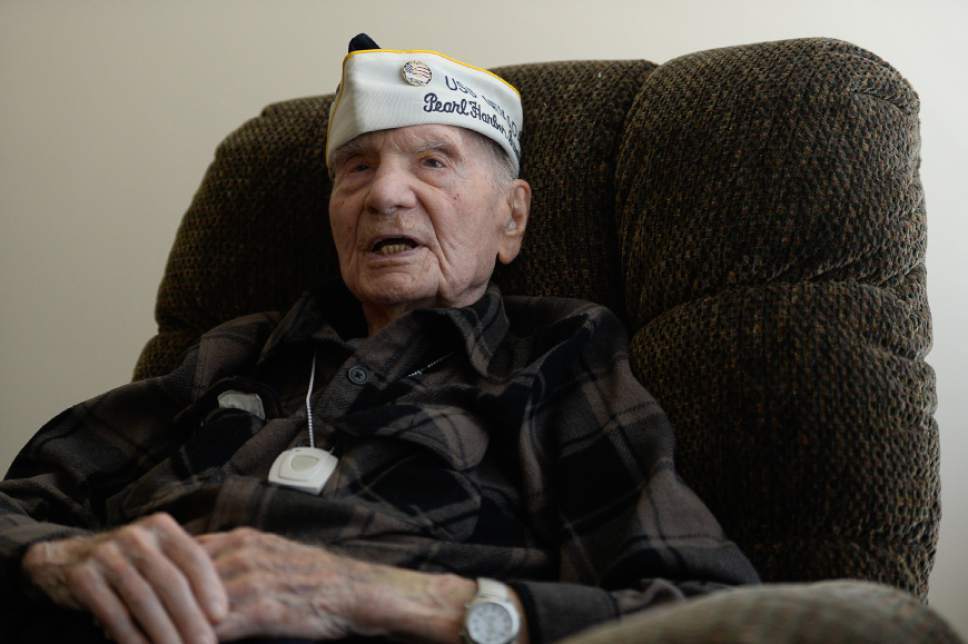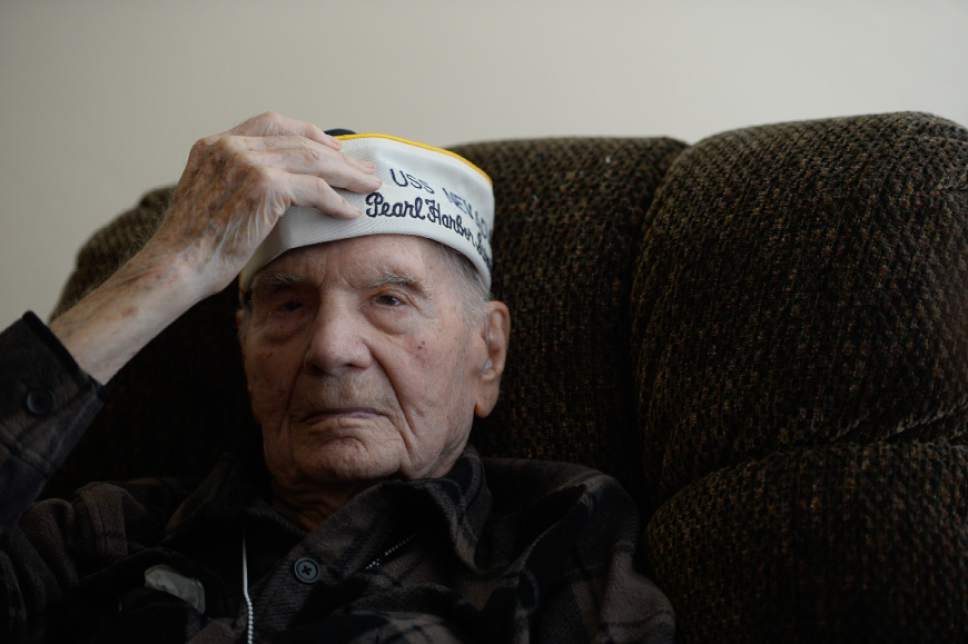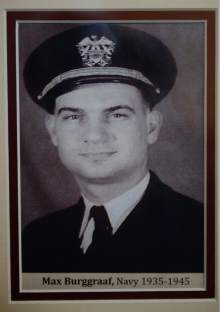This is an archived article that was published on sltrib.com in 2017, and information in the article may be outdated. It is provided only for personal research purposes and may not be reprinted.
Maxwell Burggraaf, one of Utah's remaining Pearl Harbor survivors, died in South Jordan on Jan. 12 at the age of 98.
Burggraaf was born in Ottumwa, Iowa, in 1918 and joined the Navy out of high school in 1936.
Burggraaf had been on leave the day the Japanese bombed Pearl Harbor, says his son, and had gone with a few other sailors to a Honolulu branch of the Church of Jesus Christ of Latter-day Saints. The sailors were immediately called back, and when they arrived at the harbor, the USS Oklahoma was upside down, the USS Arizona had sunk, and the USS Nevada — the ship Burggraaf worked on — had been heavily bombed.
Burggraaf worked as the chief electrician's mate (and was a lieutenant in rank), and was primarily responsible for the electricity that went to the guns on the ship. Later, he was assigned to help make the USS Nevada seaworthy again.
Sam Burggraaf never heard his father talk about the war, until 2011, when Timpview High band students approached the veteran.
Timpview's band director, David Fuller, had been teaching his students about World War II that year, and invited Burggraaf to be a guest speaker and talk to them about his experience. The students also raised money to send Burggraaf to Hawaii for the Pearl Harbor tribute for the 70th anniversary.
"The students in the band were so loving with him," said his son. "They'd line up, give him hugs and so on. He opened up and talked to them about the war, and after that, he talked to youth groups."
Since then, Burggraaf has spoken more openly about the war.
When Burggraaf was discharged in 1945, the family moved back to Salt Lake City, where he built a house, worked full time at Utah Power and Light, and finished his degree in electrical engineering at the University of Utah.
His first wife, Orpha, died in 1948. He later married Margaret Cameron Condie. They moved to Massachusetts, where he worked for General Electric as a sales engineer, and helped with some early missile sales to the government. The family also moved to Schenectady, N.Y., then to Binghamton, N.Y.
In 1957, they moved back to Salt Lake City and Burggraaf accepted a job in sales engineering at Sperry Rand Corporation.
He moved on to be an administrator of the Salt Lake Medical Clinic, where he helped with an expansion and remodel, before retiring in 1964.
After his second wife died in 1993, Burggraaf married Shirley Olson Christensen, who died in 2015.
Burggraaf had loved the outdoors, his son said, and was an avid fisherman who tied his own flies. He took his son hunting and fishing, and went with friends on annual trips to Yellowstone to hike and fish.
"Everything he did, he was very passionate about," his son said. As a young boy, he had a strong interest in electricity and learned to operate a ham radio. Later in life, he was active in the Utah Amateur Radio Society, a ham radio group. He also assisted the LDS Church in developing ham radio facilities for emergencies.
Burggraaf was one of the founders of Utah State University's Master Garden Association and gave lectures and classes on gardening. Four or five years ago, he became blind from macular degeneration, said his son, which was hard on him; he had been active and used to read three to four books a week.
Burggraaf had more than 100 grandchildren, many great-grandchildren and a great-great-grandchild and spent his final days visiting family in the assisted living facility he had made his home.
Twitter: @tiffany_mf


